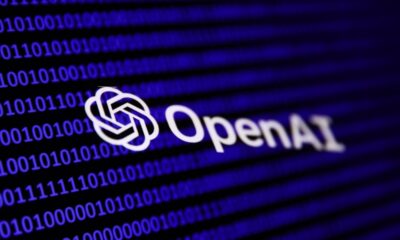Tech News
Storage explained: Consumption models of storage procurement

Storage has long been the monolith of datacentre components. Deployed in forklift upgrades on multi-year refresh cycles, shiny new arrays have not taken long to lose their sheen and become complex to manage and laggardly in performance.
Meanwhile, the cloud has emerged and made pay-as-you-go a norm that perpetually retains the sheen of newness for the customer. It brings flexibility in use, deployment, upgrades, scalability, speed of development and roll-out, and with the promise of better cost efficiency.
And so storage suppliers have adapted. Procurement options now range from full ownership with lifetime upgrades to pay-as-you-go with storage capacity and performance upgrades triggered via AIOps monitoring.
In this article, we look at consumption models of storage, the pros and cons and what’s available from vendors.
What is the traditional storage (and IT) refresh cycle?
The traditional storage refresh cycle takes place every three years and entails the entire replacement of all storage infrastructure by new hardware. It is a capital purchase in which ownership is transferred entirely to the customer, with licensing and support contracted from the supplier from then on.
There are some benefits to the traditional storage refresh cycle. These include that the customer gets a brand new set of hardware, with adequate capacity and sufficient storage controller power, plus confidence in the security and software update status of the equipment. Customers will likely see a huge improvement in performance following a refresh.
Often, new equipment will be more energy efficient and need way less maintenance, both of which cut costs. Scalability will be enhanced and new systems are more likely to provide better flexibility and integration with newer components of the wider infrastructure. Here, think cloud connectivity or containers, for example.
What are the key challenges of the traditional refresh cycle?
Most things that are benefits in traditional procurement cycles can also become downsides. While equipment may arrive shiny, new and work well, with huge amounts of capacity to move into, performance will likely degrade over time.
With storage, increases in the volume of data held can affect performance and reliability. Technologies move on, and what was good two years ago might be in sore need of an upgrade now – and old hardware might just not scale easily after a certain point in its lifespan.
There are also limits to improvements that can come via software patching. The concatenation of updates over time can result in a complex build-up of infrastructure patches.
Older hardware will tend to suffer performance degradation and likely more outages. Meanwhile, outdated hardware will struggle to meet the needs of newer software and applications.
And then, when the time comes to upgrade infrastructure, there is likely to be huge disruption as installation, migration and go-lives take place.
Buying storage hardware outright entails a transfer of risk from the vendor to the customer. The customer may pay for maintenance going forward, but ultimately it’s the customer’s business that suffers if outages occur and/or the infrastructure falls short of what’s required.
What is capex vs opex?
Capital expenditure (capex) is money spent to buy or upgrade physical, non-consumable assets. It’s a one-time investment with ownership transferred to the buyer. Capex can’t usually be deducted from taxes, but fixed assets can be depreciated over time to spread out expense over the lifetime of the asset.
Operational expenditure (opex) is money spent on day-to-day running costs that can be one-time or recurring. In storage and IT, the obvious example is payment for cloud services. Opex is listed in financial statements and can be deducted for the year in which it occurs, and it is listed on the company’s balance sheet. Opex is included in calculations of operating income, which is then used to calculate net income, or the bottom line.
Notably, some organisations – in the UK public sector, for example – have mostly paid for infrastructure via capex purchases, but that is changing.
Why is all this relevant to storage purchasing? The emergence of the cloud and models of operating and purchasing that have arisen from it have brought opex as a commonly used method of expenditure for storage and IT.
-

 Destination7 months ago
Destination7 months agoSingapore Airlines CEO set to join board of Air India, BA News, BA
-

 Breaking News8 months ago
Breaking News8 months agoCroatia to reintroduce compulsory military draft as regional tensions soar
-

 Tech News11 months ago
Tech News11 months agoBangladeshi police agents accused of selling citizens’ personal information on Telegram
-

 Breaking News8 months ago
Breaking News8 months agoBangladesh crisis: Refaat Ahmed sworn in as Bangladesh’s new chief justice
-

 Guides & Tips9 months ago
Guides & Tips9 months agoHave Unlimited Korean Food at MANY Unlimited Topokki!
-

 Gaming8 months ago
Gaming8 months agoThe Criterion Collection announces November 2024 releases, Seven Samurai 4K and more
-

 Toys10 months ago
Toys10 months ago15 of the Best Trike & Tricycles Mums Recommend
-

 Tech News9 months ago
Tech News9 months agoSoccer team’s drone at center of Paris Olympics spying scandal
























